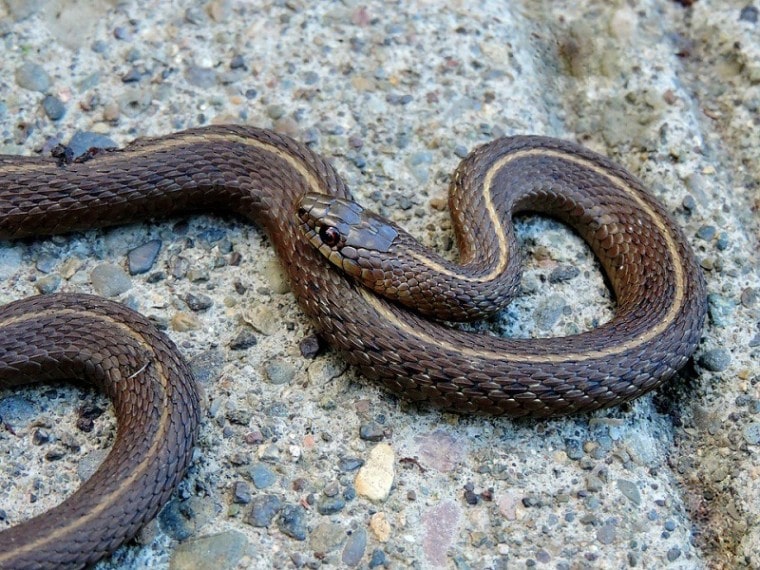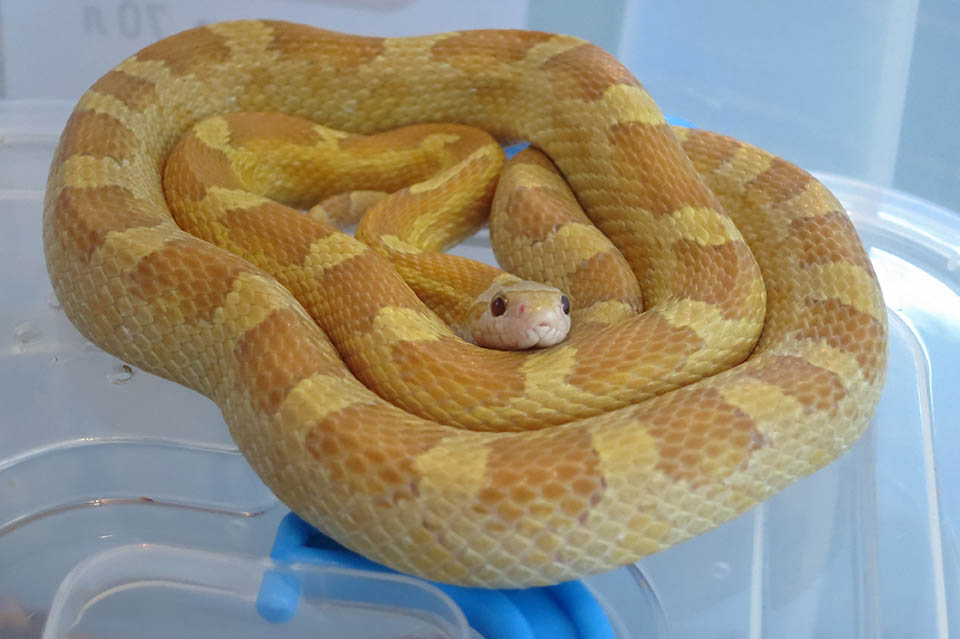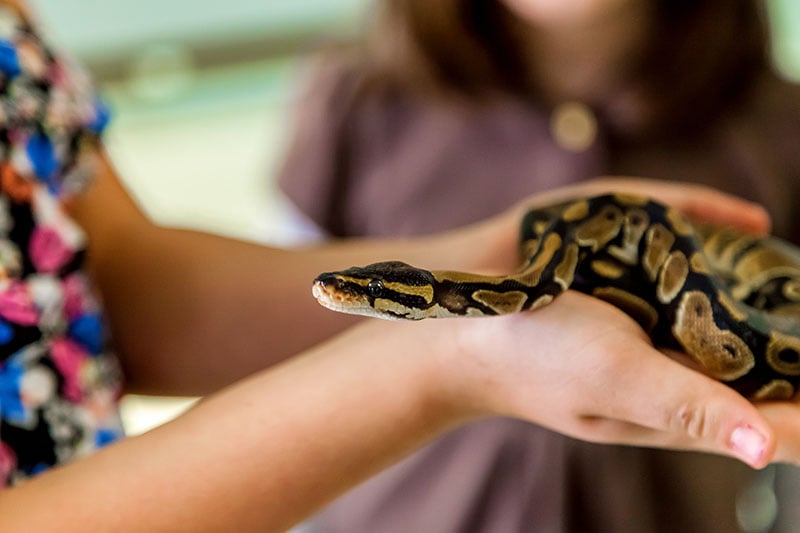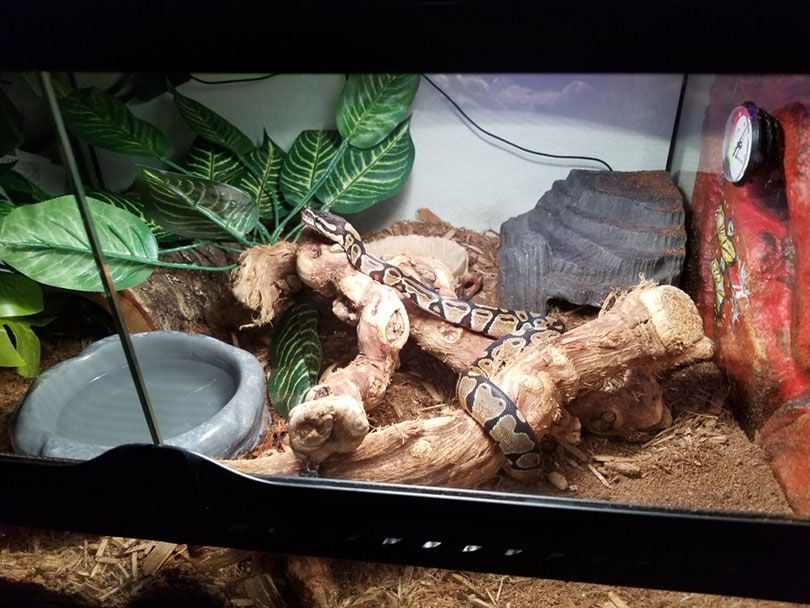
Click to Skip Ahead
Garter snakes are not large snakes. You can commonly find them in your garden and other natural areas where their prey, such as rabbits, will visit frequently. Since garter snakes are not venomous and generally not inclined to aggression toward people, they are common pet snakes.
If you have recently adopted a garter snake or found one that you intend to keep as a pet, you might want to keep track of their growth and development. The garter snake’s size can help indicate their overall health, especially as the snake ages and matures.
This article covers everything you need to know about a garter snake’s size as they grow and what to expect as they mature.
 Facts About Garter Snakes
Facts About Garter Snakes
There is a total of 30 species of garter snakes and many subspecies. Most have three longitudinal stripes that run down their back and the lower sides of their body. All species can come in various colors, including yellow, brown, black, green, and blue, among others. This primarily varies by region because not all the habitats of the various species overlap.
Since garter snakes are relatively small, they do not require a large enclosure. The size of their enclosure is unlikely to cause any disruption in their growth unless they cannot move inside of it.
One of the quirkiest characteristics of garter snakes comes into play when it is time to mate. They typically do so in the fall because they are already gathered together when preparing to hibernate.
Since there will be so many that gather into a group, the competition among males to mate can be fierce. These snakes are known to use trickery to confuse their competition. They disguise themselves as female by secreting female pheromones at a distance away from the real females.
Once the confused males slither away to find the fake females, the tricky garter snakes dart back to the female to try to mate with her while the others are gone. The females are also one of the few unique species that bear live young, meaning that they are ovoviviparous.

Garter Snake Size and Growth Chart
| Age | Weight | Length |
| 1 week | 1.5–1.8 ounces | 6–8 inches |
| 1 month | 1.8–2.3 ounces | 8–11 inches |
| 6 months | 2.3–2.9 ounces | 11–14 inches |
| 1 year | 3.7–4.5 ounces | 14–17 inches |
| 1½ years | 4.7–5.3 ounces | 18–25 inches |
| 2 years | 5.3 ounces | 18–30 inches |
When Do Garter Snakes Reach Their Full Size?
Garter snakes develop and grow to maturity much faster than many other species of snake. Most snakes reach their mature size between 3 and 5 years of age. The smaller garter snake will typically stop maturing around 1.5 to 2 years old.
What Other Factors Affect Garter Snake Growth?
The size of a garter snake is pretty much set in stone by their genetics, so long as they receive a well-rounded diet. If you frequently give them enough food to eat whenever they are hungry, they are sure to grow to their maximum size within the first two years of their lives.
Ideal Diet for Optimal Growth
Garter snakes are carnivores that feed on small prey. They like to eat earthworms, eggs, fish, snails, rodents, and smaller amphibians in the wild. When kept in captivity, garter snakes should eat thawed rodents that came frozen or feeder fish, frogs, or earthworms.
When garter snakes are young, you should give them much smaller food, like small fish, snails, and earthworms, since they are easier for them to digest. Typically, if you buy a garter snake from a pet store, you will get one that is fully grown.

Are Garter Snakes Venomous When Grown?
Venomous snakes produce fatal enzymes in their salivary glands right above their front fangs. If they bite a human or any of their prey, they inject this saliva into their prey’s bloodstream, and the heart pumps it around the body.
Garter snakes have the toxins within their saliva to qualify them as venomous. However, thankfully for humans, it is not venomous enough to cause anything more than a swollen area around the puncture wound. Some people might have an allergic reaction to the bite, which could result in an anaphylactic shock.
If you are bit by a garter snake and experience anything more than swelling, such as vomiting or dizziness, go to the emergency room immediately.
 Final Thoughts
Final Thoughts
Owning a garter snake as a pet is an excellent introduction to snake ownership. These inexpensive snakes are quite docile and tolerate handling once they become more accustomed to it. Monitor their growth as they age, but it shouldn’t vary dramatically as long as they get a healthy diet.
See also:
- Bearded Dragons Essential Supplies List: 8 Things to Get for Your New Pet
- Why Do Bearded Dragons Wave? 5 Reasons & What to Do
Featured Image Credit: tdfugere, Pixabay
 Facts About Garter Snakes
Facts About Garter Snakes






